From the dazzling blue wings of a morpho butterfly to the metallic sheen of a jewel beetle’s carapace, the natural world sparkles with iridescent insects that seem to have been painted with nature’s most vibrant palette. These living jewels haven’t developed their shimmer merely for aesthetic purposes—their colorful displays represent millions of years of evolutionary adaptation and complex optical physics. Iridescence, the property where colors change depending on the viewing angle, serves diverse functions in the insect world and provides fascinating insights into evolutionary processes. As we explore this phenomenon, we’ll uncover how these structural colors work, why they evolved in certain species, and what these brilliant displays reveal about the intricate dance between form, function, and survival in the insect kingdom.
The Physics Behind the Flash: How Insect Iridescence Works
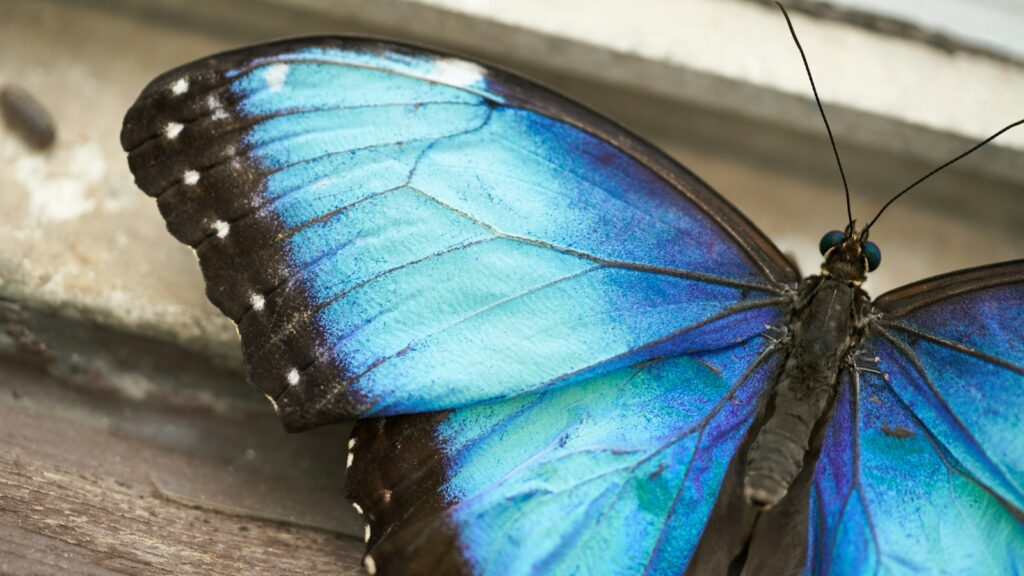
Unlike traditional pigment-based coloration, which absorbs certain wavelengths of light and reflects others, iridescence in insects comes from structural properties that manipulate light through interference, diffraction, and scattering. These structural colors arise from incredibly intricate nanoscale architectures on the insect’s exoskeleton or wings, often consisting of multiple transparent layers with precise spacing between them. When light strikes these structures, some wavelengths cancel each other out through destructive interference, while others are amplified through constructive interference, creating the characteristic color-shifting effect we perceive as iridescence. Remarkably, these structures are often arranged in complex patterns of ridges, scales, or photonic crystals that can be as precise as a few nanometers—smaller than the wavelength of visible light itself. The resulting colors are not only more vibrant than pigment-based colors but also more resistant to fading, providing a permanent signature that remains vivid throughout the insect’s lifetime.
Not Just For Show: The Evolutionary Advantages of Iridescence

Though visually striking to human observers, iridescence evolved in insects not for our appreciation but as solutions to specific environmental challenges and reproductive pressures. For many species, these brilliant displays serve as honest signals of genetic quality during mate selection, where the precision and brilliance of iridescent structures indicate an individual’s developmental stability and overall fitness. In other cases, iridescence functions in complex communication systems, allowing insects to recognize members of their own species while remaining cryptic to predators with different visual systems. Some iridescent beetles use their reflective properties for thermoregulation, reflecting infrared radiation to keep cool in hot environments or absorbing specific wavelengths for warmth. Perhaps most surprisingly, certain iridescent structures enhance the mechanical properties of insect wings and exoskeletons, providing greater durability while minimizing weight—demonstrating that evolution often selects for structures that serve multiple functions simultaneously.
Brilliant Disguises: Iridescence as Camouflage
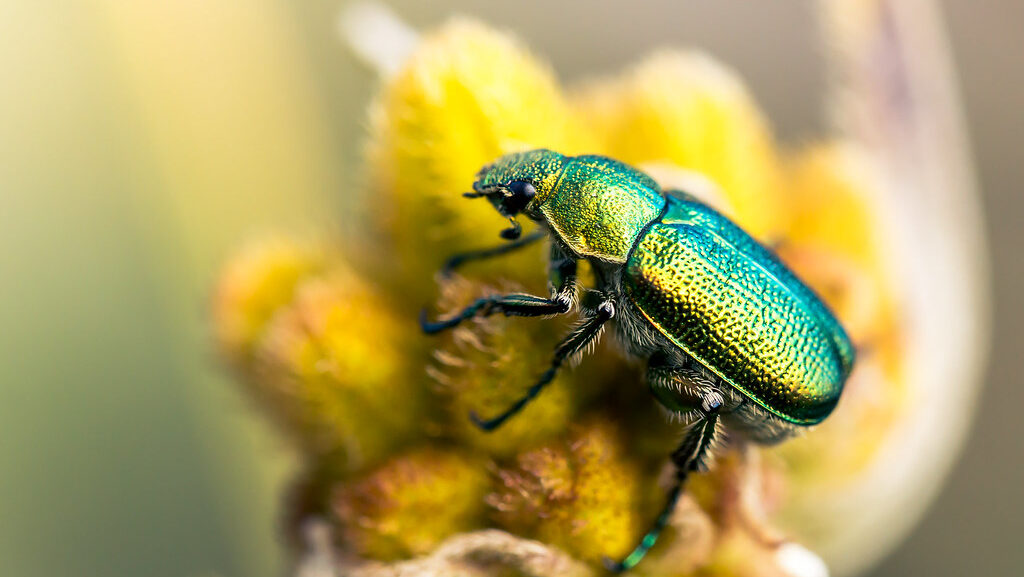
Counter to intuition, the flashy appearance of iridescent insects can actually serve as sophisticated camouflage in certain environments. In densely vegetated habitats like tropical rainforests, where dappled light creates constantly shifting patterns of brightness and shadow, the changing colors of iridescent insects help them blend into this complex visual environment. Some iridescent beetles that live among wet leaves appear to mimic the way water droplets reflect light, making them less conspicuous to predators scanning the forest floor. The metallic green of certain tiger beetles matches the reflective properties of the sandy shores they inhabit, making them surprisingly difficult to spot despite their seemingly obvious coloration. Research has shown that certain predators, particularly birds, have more difficulty tracking moving iridescent targets because the constantly shifting colors disrupt the predator’s ability to lock onto a consistent visual pattern—a phenomenon known as “flicker-fusion” camouflage that transforms a flashy appearance into an effective defense mechanism.
Sexual Selection: When Brightness Equals Fitness

Some of the most spectacular examples of insect iridescence have evolved through sexual selection, where potential mates (typically females) choose partners based on the quality and intensity of their iridescent displays. The peacock butterfly and many tropical morpho species exemplify this evolutionary pathway, where males with the brightest, most structurally perfect wings gain reproductive advantages by attracting more mates. These iridescent structures are energetically costly to produce and maintain, making them honest indicators of genetic quality that cannot be easily faked by less fit individuals. Research has shown that the ultraviolet components of these iridescent displays—invisible to human eyes but brilliantly apparent to insect vision—often contain the most important information for mate choice decisions. In some butterfly species, females can assess the symmetry and structural perfection of male wing scales with remarkable precision, detecting nanoscale imperfections that correlate with overall genetic quality and developmental stability.
Evolutionary Arms Races: Predators, Prey, and Perception

The evolution of iridescence in insects often triggers cascading evolutionary responses among predators and competing species, creating sophisticated arms races that drive further adaptation. As iridescent patterns evolved for signaling or camouflage, predator visual systems simultaneously evolved enhanced abilities to detect or see through these strategies. Some predatory insects and birds have developed specialized visual processing capabilities that allow them to better distinguish iridescent prey from background environments or to recognize the patterns characteristic of distasteful species. In response, certain iridescent insects have further refined their structural colors to work specifically against their main predators’ visual systems while remaining effective for their original communication purposes. This co-evolutionary process has led to increasingly complex optical structures and visual processing systems across both predator and prey species, demonstrating how sensory ecology drives the evolution of physical traits in ecological communities.
The Diverse World of Iridescent Insects
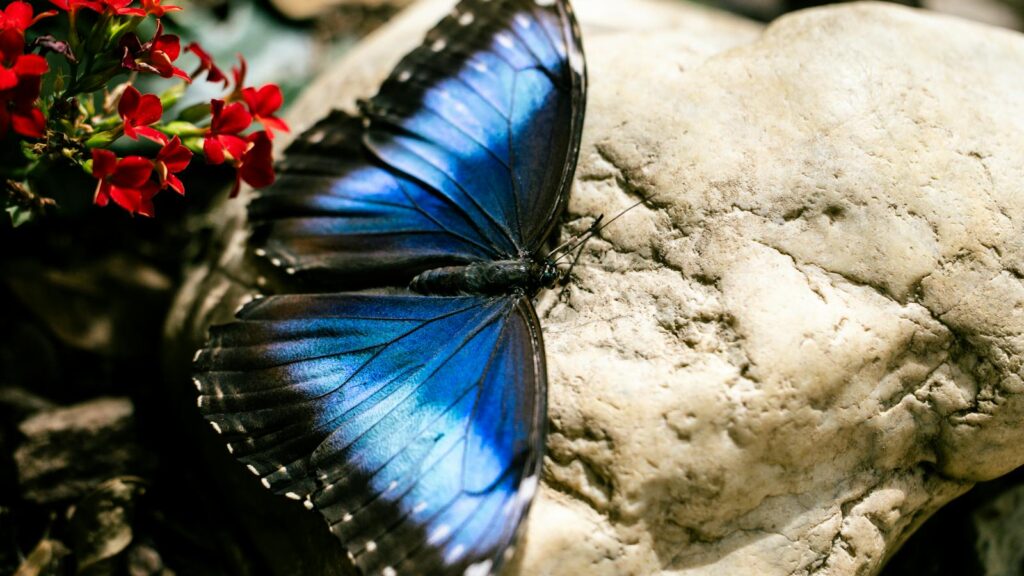
Iridescence has evolved independently in numerous insect lineages, creating a remarkable diversity of shimmering species across the globe. Beetles display perhaps the widest range of iridescent strategies, from the jewel-like scarabs of tropical forests to the metallic tiger beetles of temperate regions, each employing slightly different structural arrangements to achieve their distinctive looks. Among butterflies and moths, iridescence appears most commonly in the Morpho, Papilio, and Urania genera, where complex scale structures create the vivid blues and greens that have fascinated collectors for centuries. Damselflies and dragonflies employ thinner cuticle layers to create their characteristic metallic sheens, which often serve as indicators of age and sexual maturity. Even some flies and wasps have developed localized iridescence on their wings or bodies, demonstrating that this optical strategy has proven useful across widely divergent insect groups with different ecological niches and evolutionary histories.
Nanoscale Architectural Marvels: The Structures Behind the Shine
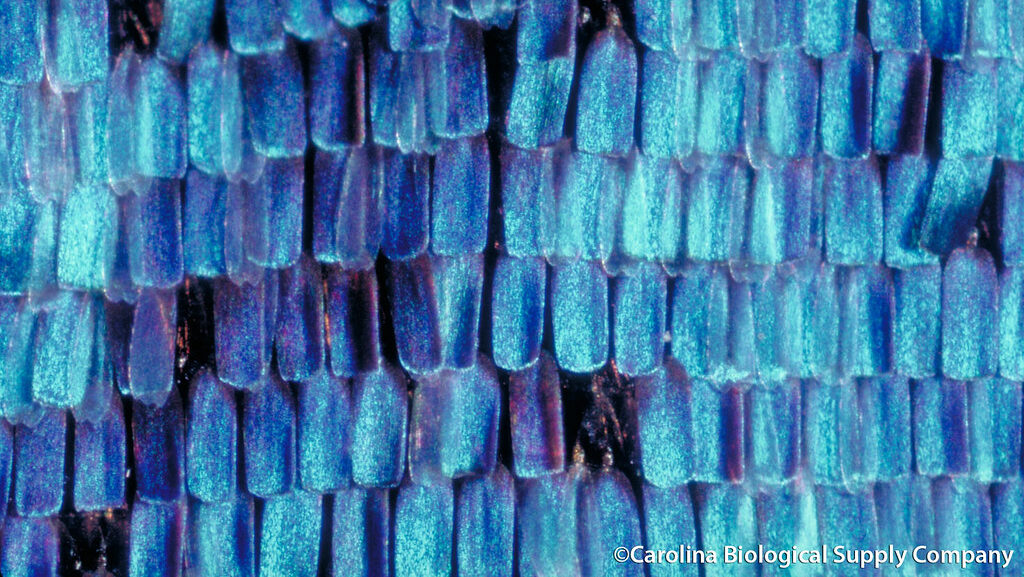
The structural colors of iridescent insects represent some of the most precise natural architectures known to science, often surpassing human engineering capabilities in their optical efficiency. Electron microscopy has revealed that butterfly wing scales contain intricate arrangements of ridges, cross-ribs, and lamellae that form natural diffraction gratings and thin-film interferometers of astonishing precision. In beetles, the iridescent effect typically comes from helicoidal arrangements of chitin microfibrils that form natural photonic crystals capable of selectively reflecting specific wavelengths of light. The blue Morpho butterfly achieves its brilliant color through “Christmas tree” shaped ridges on its scales, with precisely spaced branches that reflect blue light while absorbing other wavelengths. What makes these structures particularly remarkable is that they self-assemble during development without direct genetic blueprints for each component, instead emerging from complex interactions between physical forces and biochemical processes that scientists are still working to fully understand.
Iridescence Through Time: The Fossil Record
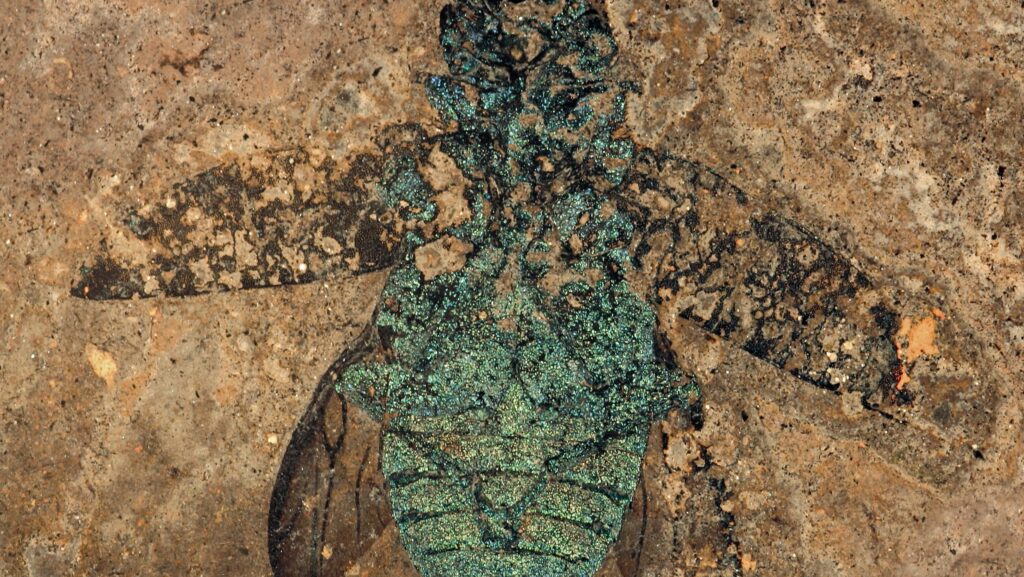
Remarkably, paleontologists have discovered that iridescence is not merely a recent evolutionary innovation but has existed in the insect world for millions of years. Fossil insects from amber deposits dating back 45-50 million years show preserved structural colors that still shimmer today when viewed under the right lighting conditions. Even more astonishing are fossilized beetle specimens from ancient lake bed deposits that have retained their structural coloration for over 49 million years, providing direct evidence of how these optical adaptations looked in ancient ecosystems. Analysis of these prehistoric iridescent structures reveals that the fundamental optical principles and nanoscale architectures employed by ancient insects closely resemble those found in modern species, suggesting that once these effective solutions evolved, they remained relatively stable across evolutionary time. The preservation of these delicate structures offers rare glimpses into the visual ecology of ancient forests and provides concrete evidence of how selection pressures for communication, camouflage, and thermoregulation have remained consistent across vast periods of evolutionary history.
Learning From Nature: Biomimetic Applications
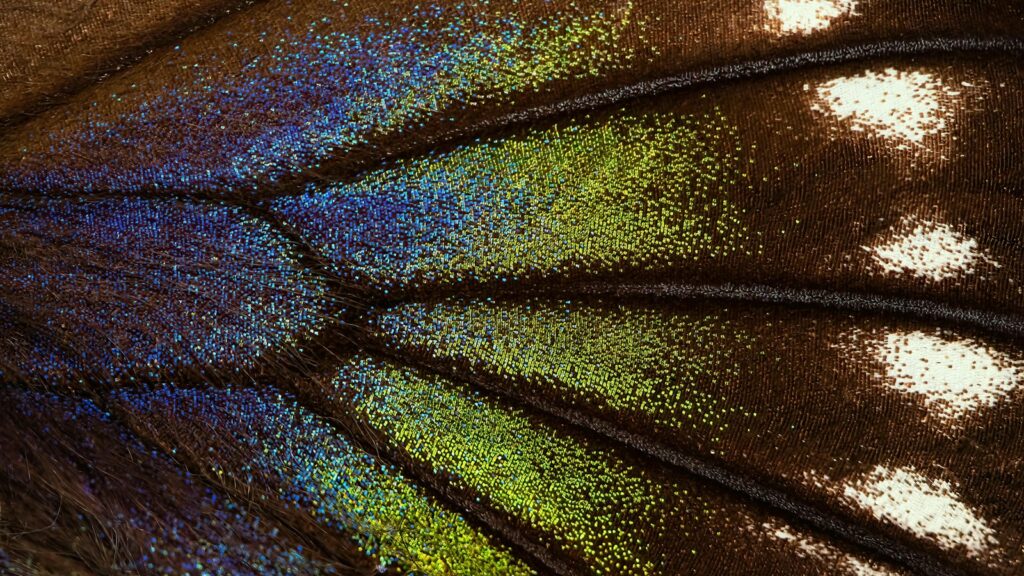
The sophisticated optical properties of iridescent insects have inspired numerous technological innovations as scientists and engineers look to nature for sustainable design solutions. Researchers have developed iridescent fabrics and paints based on butterfly wing structures that create color without chemical pigments, potentially reducing environmental impacts from traditional dyeing processes. Security features on currency and identification documents increasingly incorporate structural color elements inspired by beetles and butterflies, as these are extremely difficult to counterfeit but relatively easy to authenticate. Perhaps most promising are developments in photonic technologies, where insect-inspired structures are being adapted to create more efficient light-emitting diodes, solar cells, and optical communication devices. The non-toxic, self-assembling nature of these biological structures offers valuable insights for nanotechnology, pointing toward manufacturing processes that require fewer harsh chemicals and less energy than conventional methods while producing materials with superior optical properties.
Climate Change and Iridescent Insects: An Uncertain Future

The precise nanoscale structures responsible for insect iridescence depend on highly regulated developmental processes that can be disrupted by environmental stressors, making these species potentially vulnerable to climate change. Research has shown that butterfly specimens raised under thermal stress often develop less perfect scale structures, resulting in duller or more irregular iridescent patterns that might reduce their effectiveness in mate attraction or predator avoidance. Rising temperatures may also alter the timing of developmental stages critical for proper formation of these complex structures, potentially leading to mismatches between environmental conditions and the insects’ life cycles. For beetle species that use their iridescence for thermoregulation, changing climate patterns may render their current adaptations less effective, forcing rapid evolutionary adjustments or population declines. Conservation biologists now recognize that monitoring changes in the structural colors of certain insect populations could provide early warning signs of ecosystem stress, as these precise physical structures may respond to environmental degradation before species-level impacts become apparent.
Convergent Evolution: When Different Paths Lead to Similar Shine
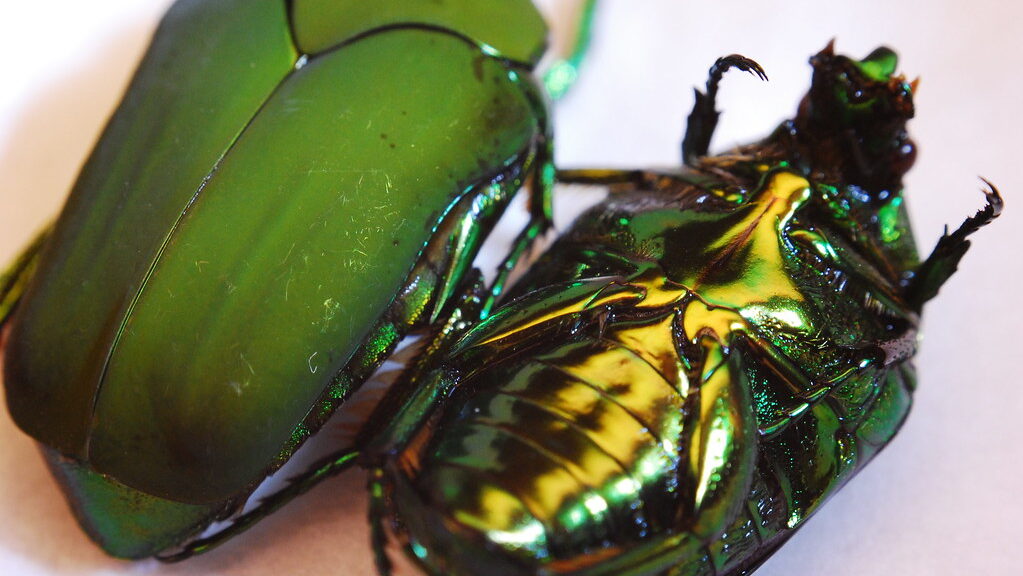
One of the most fascinating aspects of iridescence in the insect world is how frequently this trait has evolved independently across distantly related lineages, providing a striking example of convergent evolution. Despite having different ancestral starting points and following separate evolutionary trajectories, insects from various orders have repeatedly developed similar optical solutions to common ecological challenges. For instance, the metallic blue coloration found in certain butterflies, beetles, and damselflies arises from different structural arrangements that nevertheless produce similar visual effects and serve comparable functions. Detailed comparison of these convergently evolved iridescent structures reveals how natural selection can shape different biological materials toward similar optical outcomes when faced with similar selection pressures. The underlying genetic and developmental pathways leading to these convergent features often differ substantially, highlighting evolution’s remarkable ability to find multiple solutions to the same problem and demonstrating that physical laws constrain the possible forms that can effectively achieve particular optical properties.
Cultural Significance: Humans and Shimmering Insects

Throughout human history, iridescent insects have captured our imagination and found their way into art, mythology, and material culture across civilizations. Ancient Egyptian jewelry featured scarab beetles whose natural iridescence was enhanced with precious materials, while pre-Columbian Mesoamerican cultures incorporated iridescent beetle elytra into elaborate ceremonial garments and ornaments that still retain their brilliance centuries later. In Japanese and Chinese traditions, certain iridescent beetles and butterflies were associated with transformation, immortality, and spiritual transcendence, inspiring countless artistic representations in painting, poetry, and decorative arts. Even in contemporary society, these insects continue to influence fashion and design, with major designers creating fabrics and accessories that mimic the optical properties of butterfly wings and beetle carapaces. This enduring fascination reveals how the extraordinary visual properties of these creatures speak to something fundamental in human aesthetic appreciation, creating a cultural bridge between our species and these evolutionary marvels.
Conclusion
The dazzling iridescence displayed by many insect species represents far more than an aesthetic curiosity—it embodies the remarkable intersection of physics, ecology, and evolutionary biology. These living light shows demonstrate how natural selection has harnessed complex optical principles to solve diverse challenges from communication and camouflage to thermoregulation and mate selection. As we continue to study these evolutionary innovations, we gain not only deeper insights into the mechanisms of adaptation but also inspiration for sustainable technologies that mimic nature’s efficient designs. In the shimmering wings of a butterfly or the metallic gleam of a beetle, we witness both the power of evolutionary processes to produce extraordinary complexity and the ongoing dialogue between organisms and their environments that shapes the diversity of life on Earth.
